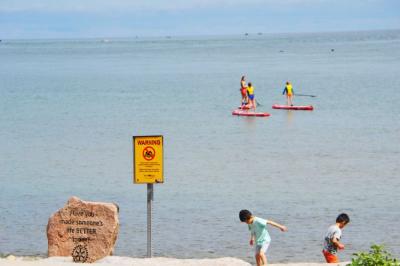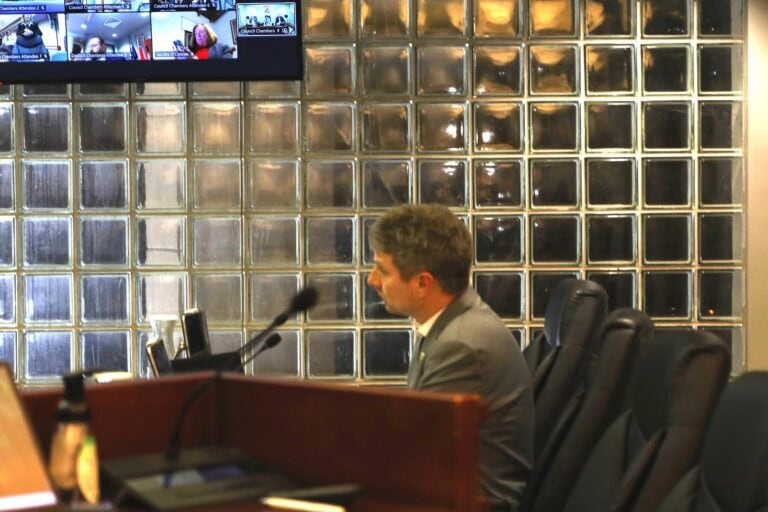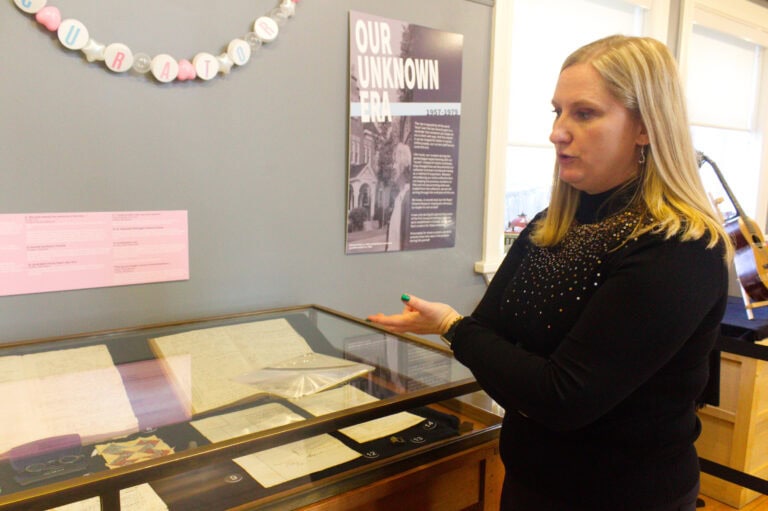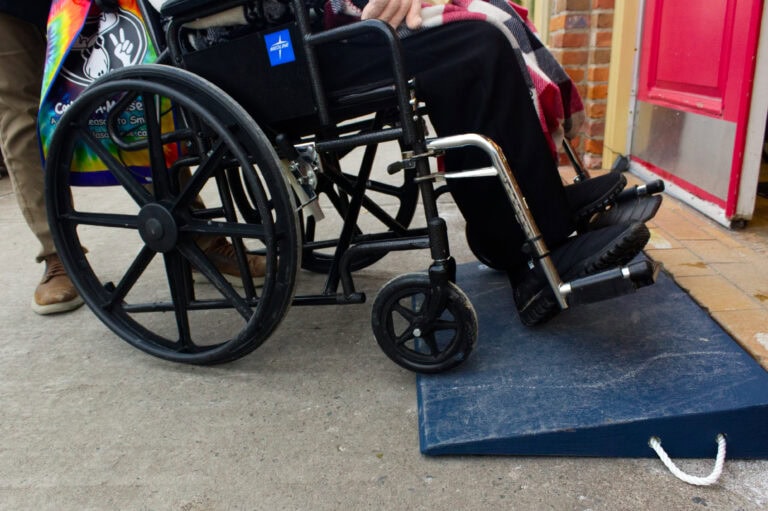After The Lake Report’s inquiries, region considering posting results on ‘open data’ page
Niagara-on-the-Lake’s popular Queen’s Royal Beach has failed E. coli contamination tests at least twice so far this summer, The Lake Report has learned.
However, while the water quality at the picturesque waterfront beach is being tested three times a week, the results are not readily available to the public.
The results are not included among the Region of Niagara’s daily beach water quality update, nor are they published by the Town of NOTL.
So far, Queen’s Royal exceeded the acceptable E. coli level on June 24 and last Friday, July 17, according to data from the region.
The only indication of a water problem on Tuesday was a lone yellow sign on the beachfront, warning that “recent water sample test results indicate excessive levels of bacteria. Water in this area may not be safe for swimming or bathing.” By Wednesday, the water was considered safe and an “educational” sign advised visitors about conditions that could lead to unsafe bacterial levels.
Heavy rains, high winds and other environmental factors can influence E. coli levels, Niagara public health says. While there has been little rain in the past month, the first time Queen’s Royal exceeded safe levels, on June 24, followed a rainy day. Last Friday’s result came one day after a heavy rainfall. This past weekend’s thunderstorms also stirred up the lake considerably. Results of this week’s tests are not yet available.
A major reason for the lack of data on NOTL’s water quality is that Ryerson Park beach and Queen’s Royal Beach, near the popular gazebo in Old Town, are not officially considered beaches by the Region of Niagara.
Queen’s Royal is not busy enough and lacks some of the essential facilities that would qualify it as a beach, a Niagara public health official says.
That said, water samples from Queen’s Royal are being analyzed by the region under an agreement with the Town of NOTL as part of the municipality’s Remedial Action Plan project.
That project is the final stage of repairs to the town’s sewer system, which last year was found to have been leaking raw sewage directly into the lake. The E. coli seepage problem was documented in an extensive story by The Lake Report published last May.
This summer’s water quality data is supplied to the agencies participating in the Remedial Action Plan (the town, regional public health, environment ministry and Niagara conservation authority), but neither the region nor the town have been publicly releasing the results to date.
“The only reason why we’re doing (testing) is to support the project, not because we are calling it a beach,” says Anthony Habjan, Niagara’s acting director of environmental health.
When The Lake Report asked whether the region or town should be concerned about liability problems over not publicizing the test data if someone becomes ill from E. coli, Habjan emphasized the region is strictly helping the town with its remediation project. Town officials did not answer repeated questions about liability concerns.
After inquiries about water quality by The Lake Report over the past few weeks, the region is looking at posting the results of Queen’s Royal Beach’s tests on a regional “open data” page, accessible to the public, Habjan said in an interview.
As of earlier this week, that had not yet been established.
Habjan said the region suggested a few months ago that the town install “education-type” signs for the public at Queen’s Royal and Ryerson Park beach, warning people about the lack of testing or what conditions could lead to high levels of E. coli.
It appears that signage is in use at Queen’s Royal but no such signs have been installed at Ryerson Park. As well, the water at Ryerson Park is not being tested by any public agency.
Town officials did not respond to questions about if, or when, a similar advisiory sign will be installed at Ryerson Park.
Official beaches are tested six times a week, but water quality can change quickly, he emphasized.
And even if a beach has passed inspection, environmental factors can play a role – such as “did it rain in the last 24 to 48 hours, is the water clear, is there (pollution) from birds or animals, is the water turbid, is there high winds? All of these factors play a part in potentially increasing E. coli.”
“This is something that we’ve talked (to the town) about in February, March,” he said.
Queen’s Royal is a busy spot for families, who often swim and wade in the water. It’s also used by kaykers, canoeists and paddleboarders. While there may be a few dozen people in the water on a warm summer day, it doesn’t attract the hundreds of beachgoers that other spots across the region do, Habjan said.
Besides high usage, the region criteria for an official beach include adequate parking and washroom facilities, he said.
Testing beach water is a precise process. Five samples are collected each time, evenly distributed along the length of the entire beach and the geometric mean, “almost like an average,” of the results determines whether the beach passes, Habjan said.
Last year at this time Queen’s Royal was included among the beaches listed daily on the region’s water quality testing website. The data in 2019 showed the beach was closed at least six times between June 11 and Aug. 15 due to high E. coli levels.
“We shouldn’t have kept it on our beach site because we’re not saying it’s a beach and it’s misleading, in a sense,” Habjan said.
The water at Ryerson Park beach, about two kilometres west of Queen’s Royal in the Chautauqua neighbourhood, has not been regularly tested by the region for a few years, Habjan said.
With only small groups using the beach, “Going back to 2017-2018, Ryerson beach was not considered to be a beach, and it was no longer able to be tested and put on our website for beach monitoring,” he said.
While there have been some public requests to sample it, “the usage is still really low. It is a concern that without adequate parking and washrooms, any promotion of this as a swimming beach will create sanitation and parking complaints from the local residents.”











